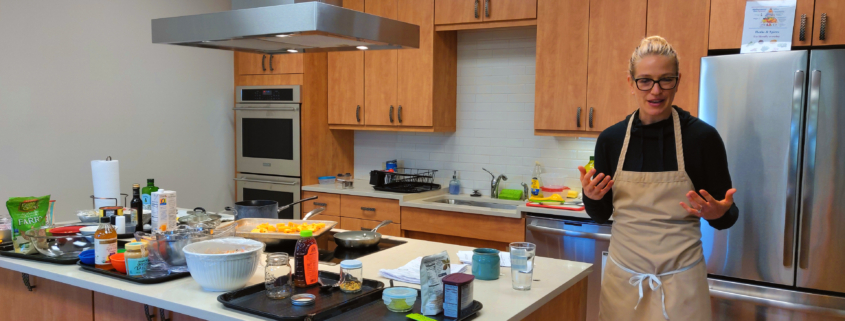Phyto-What?
Written by Lori Bumbaco, MS, RDN, CSO, LDN, Oncology Dietitian
Have you heard that you should “Eat the Rainbow”? The colorful natural pigments in plant foods are called Phytochemicals. These “plant chemicals” that organically exist in foods like fruit, vegetables, nuts, seeds, and whole grains.
What are Phyto-Chemicals?
- The word “phyto” comes from Greek, meaning “plant”. Therefore, phytochemicals are literally plant chemicals that occur naturally in plant foods.
- They are responsible for giving color, flavor, and odor to plant foods. These compounds provide the plant with protection against predators and infection.
- Research suggests that eating foods high in phytochemicals provide a variety of health benefits. When we eat food with phytochemicals, we reap the same protection against diseases such as cancer. Another way to think of “phyto” chemicals, are “fighter” chemicals.
- You might be surprised to learn that they are not essential nutrients in our diet. However, they are intriguing components to plants that hold promise to promote our health.
What are examples of Phyto-Chemicals?
- There are tens of thousands of phytochemicals, but researchers speculate that there are likely many more that remain to be discovered. They are classified by their chemical structures and functional properties. Some scientists like to use a “Phytochemical Family Tree” to depict the major groups of phytochemicals found in food.
- Polyphenols, or phenolics, are a large group of phytochemicals. They include flavonoids, phenolic acids, stilbenes, lignans, among others.
- Flavonoids are the largest known group of phytochemicals. More than 6000 types of flavonoids have been described.
- Flavonols are a group of phytochemicals belonging to the flavonoid family. Quercetin is an example of a flavonol, and is found in red apples.
- Anthocyanidins are another group of flavonoids, with anthocyanin as example. Anthocyanins are found in red-violet fruit like blackberries.
- Another type of flavonoid is isoflavonoids; which is a group that contains daidzein, genistein, and glycitein. We find these phytochemicals in soy, and whole soy products.
- Another example of flavonoids are catechins in the flavanol family. Tea, specifically green tea, contains catechins especially EGCG.
- Carotenoids are another group of phytochemicals that include beta carotene and lycopene. Less familiar carotenoids are lutein and zeaxanthin, and alpha carotene. Orange fleshed vegetables, as well as red, green, and orange colored fruit and vegetables contain these phytochemicals. For example, winter squash, spinach/leafy greens, broccoli, carrots, and cooked tomatoes contain carotenoids.
- Indoles and Isothiocyanates are another group of phytochemicals. Some examples are allyl isothiocyanate, sulforaphane, phenylethyl isothiocyanate, and 3-phenylpropylisothiocyanate. We find these phytochemicals in cruciferous vegetables. This is a big group of vegetables, such as broccoli, cabbage, Brussels sprouts, cauliflower, collard greens, horseradish, kale, mustard greens, radishes, rutabaga, turnips, and watercress.
Click below for commonly asked questions about phytochemicals along with delicious recipes you can try at home.



